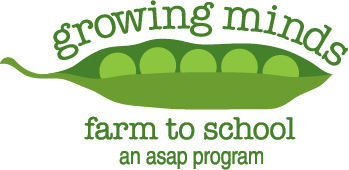This week’s theme is planting a fall garden. Our “Growing Minds Day by Day” educational resource lists are designed for families and educators.
Growing Minds Day by Day
Planting a Fall Garden
Books:
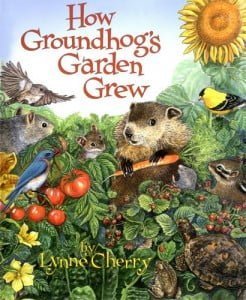 How Groundhog’s Garden Grew
How Groundhog’s Garden Grew
Our first recommendation this week is How Groundhog’s Garden Grew by Lynne Cherry. Little Groundhog loves his vegetables – and loves eating them out of his neighbor’s garden! One day he learns to grow his own, with a little help from some insect and animal friends. Readers of this sweet story about friendship and cooperation will learn what to expect when growing their own garden. Watch a read aloud on YouTube.
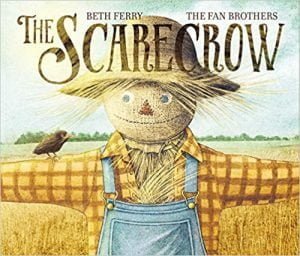 The Scarecrow
The Scarecrow
Next up is The Scarecrow by Beth Ferry. This tender and affectionate story reminds us of the comforting power of friendship and the joy of helping others. All the animals know not to mess with the old Scarecrow. But when a small, scared crow falls from midair, Scarecrow does the strangest thing. He saves the tiny baby crow. Soon a loving bond grows between the two unlikely friends. But is it strong enough to weather the changing of the seasons? Watch a read aloud on YouTube.
Growing Minds Lending Library
Visit the Growing Minds’ farm to school literature database to discover more of our favorite children’s books about farms. Type “diversity” into the search bar to find books that feature characters from underrepresented racial and ethnic groups. Asheville-area educators may also check books out from our lending library.
Local Food Recipe:
 Bruschetta is a traditional Italian appetizer, or antipasto, featuring toasted bread sprinkled with olive oil and layered with assorted toppings, like vegetables, meat, herbs, or cheese. The simple recipe below stars tomatoes—the Growing Minds Get Local Product of the Month for August. This tasty dish can be served at home or in the classroom for a light lunch or healthy snack, or prepared as part of a classroom activity.
Bruschetta is a traditional Italian appetizer, or antipasto, featuring toasted bread sprinkled with olive oil and layered with assorted toppings, like vegetables, meat, herbs, or cheese. The simple recipe below stars tomatoes—the Growing Minds Get Local Product of the Month for August. This tasty dish can be served at home or in the classroom for a light lunch or healthy snack, or prepared as part of a classroom activity.
Fresh Tomato Bruschetta
Serves 20 children (cut this recipe in half to serve a family of 4-6)
Ingredients:
- 2 pints local cherry tomatoes
- 1/2 cup fresh spinach, finely chopped
- 4 Tbsp. basil leaves, finely chopped
- 2 Tbsp. chives, finely chopped
- 2 baguettes, cut into ½ inch slices
- 2 cups ricotta cheese
- Olive oil for drizzling
Directions:
- Rinse, then halve the cherry tomatoes.
- In a small mixing bowl combine the ricotta cheese, spinach, basil, and chives.
- Toast bread slices, then drizzle with olive oil.
- Assemble by layering toast with ricotta mixture and tomatoes.
- Serve 1 slice to each student. Enjoy!
Educational Resources:
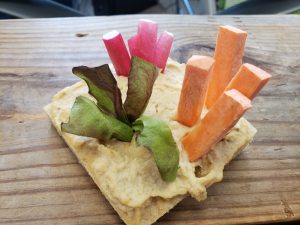 Teachers and parents hoping to incorporate farm to school activities into their fall lessons (whether virtual or in-person) might find inspiration in our list of 70 Ways to Do Farm to School. Remember that farm to school activities don’t have to be complicated in order to be meaningful, fun, and educational for children. This list includes ideas for simple activities and lessons, along with more involved projects. If you’re planning to plant a fall garden with children this year, the lesson plans below might also offer a good starting point for engaging young learners.
Teachers and parents hoping to incorporate farm to school activities into their fall lessons (whether virtual or in-person) might find inspiration in our list of 70 Ways to Do Farm to School. Remember that farm to school activities don’t have to be complicated in order to be meaningful, fun, and educational for children. This list includes ideas for simple activities and lessons, along with more involved projects. If you’re planning to plant a fall garden with children this year, the lesson plans below might also offer a good starting point for engaging young learners.
Growing Minds Lesson Plans
- Garden Plot Crackers recipe & lesson plan
- Garden Planning lesson plan
- Literacy Beds lesson plan
- Seed Starting lesson plan
- Searching the Garden Safely lesson plan
Harvesting Tips: Picking—rules and exceptions
While late summer is the time of year to plant your fall garden, it’s also peak harvest season for many warm season veggies. Follow the harvesting tips below to get the most out of your summer crops.
Tomatoes: Most tomatoes are at peak flavor when ripened on the vine. Cherry tomatoes are an exception to this rule because they are prone to splitting and should be picked as soon as they start showing color.
Peppers: Peppers can be picked at any stage. The longer a pepper is on the vine the more the flavor will develop. Sweet peppers will be sweeter and hot peppers will be hotter. Hot peppers should be picked young to avoid too much of a kick if heat is not ideal for your taste.
Zucchini and other summer squashes: Harvest when 6-8 inches long. As they get larger, the seeds and rind will get harder. Very large summer squashes can be grated and used in breads, muffins, or fritters.
Activities:
Energizer!
Make a set of vegetable cards. The set of cards should feature four different vegetables, with one vegetable printed on each card. For example, a set of 20 cards would have five carrots, five tomatoes, five green beans, and five lettuce cards. In the garden or the classroom, give each child a card. Tell the children that in this activity, you will call out a vegetable and the children with that vegetable will make a movement. Carrots will twist at the waist, lettuce will march in place, green beans will jump up, and tomatoes will stretch to the sky. Practice the activity several times, demonstrating each movement when you hold up a card. Call out the vegetable names and watch the children move! After a few rounds, ask the children to switch cards and play again.
 Seed Tape Activity
Seed Tape Activity
Children love getting their hands dirty by putting seeds and plants in the ground. To help them succeed in planting your fall seeds at the correct spacing, consider making a “seed tape” with them.
Directions:
- Dissolve 1 tablespoon of cornstarch in 1 cup of cold water. Cook on medium heat, stirring constantly. Once it starts to boil, remove from the heat and let cool. Once cooled, put the paste in an airtight container.
- Cut a paper towel into strips one inch wide.
- Using a cotton swab, put dots of the paste on the paper towel about one inch apart. While the paste is still wet, place a seed in the paste.
- Plant the entire seed tape in the garden and cover with an inch of soil.
Fun fact: Growing Minds contributed this seed tape activity and tips for starting an edible garden with kids to the book Before We Eat: From Farm to Table by Pat Brisson.
Seed Saving Activity
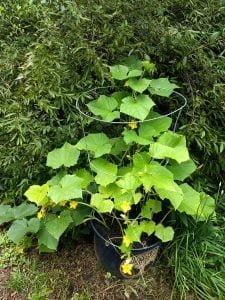 Fall is a great time to collect and save seeds for next year’s garden. Consider doing a seed saving activity with your child. Do you have cucumbers growing in your garden, or do you know someone who has cucumbers in theirs? If so, you can save some of the seeds to grow next year. What other vegetables, flowers, or trees could you save the seeds from?
Fall is a great time to collect and save seeds for next year’s garden. Consider doing a seed saving activity with your child. Do you have cucumbers growing in your garden, or do you know someone who has cucumbers in theirs? If so, you can save some of the seeds to grow next year. What other vegetables, flowers, or trees could you save the seeds from?
Directions:
- Let one or two cucumbers thoroughly ripen on the vine. They will enlarge and turn yellow. They should stay on the vines until the vines are dead.
- Bring the cucumbers into the house and let them ripen further on a dry shelf in the pantry (or someplace out of direct sunlight).
- When the cucumbers begin to turn soft, scoop out the seed mass (your kids will love this part!) and put it into a large jar of water.
- Let the seeds sit (and ferment) for five days. Have your children observe what’s happening to the seeds each day and keep a record of changes they see.
- On the fifth day, separate the scum from the good seeds that have sunken to the bottom. Rinse the seeds in a colander, then dry them on screens (window screens work well) for at least three weeks.
- Store the dried seeds in airtight containers, label, and date clearly. Store the containers in a cool, dark place free of humidity. If the seeds are processed properly they will remain good for several years.
Tips for Planting a Fall Garden:
 August is the perfect time to plan (and plant!) your fall garden, whether you have space for a full garden in the yard, a container garden on the front step, or both. If you grew a summer garden, you can start by pulling out dying or over-mature summer plants and weeds to prepare space for your school or family to plant your fall crops.
August is the perfect time to plan (and plant!) your fall garden, whether you have space for a full garden in the yard, a container garden on the front step, or both. If you grew a summer garden, you can start by pulling out dying or over-mature summer plants and weeds to prepare space for your school or family to plant your fall crops.
Most seeds that you can plant in the early spring can also be planted in the fall. Herb gardens are another great choice for the fall (for herb gardening tips, scroll to the bottom of this page). Need more guidance on what to plant? Check out our basic Seed Starting Tip Sheet. NC State Extension has also put together a more comprehensive fruit and veggie planting guides for both the North Carolina Mountain and Piedmont/Coastal Plain regions.
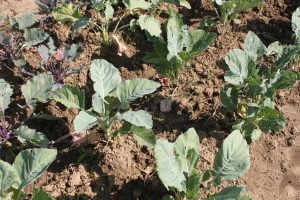 Make sure to include children when planning your fall garden. What vegetables would they like to grow and cook with in the fall and early winter? Root vegetables, leafy greens, and herbs are all good choices for fall planting. Lettuce, carrots, beets, radishes, kale, and collards are delicious, nutritious veggies that thrive in cool weather. You can plant many fall crops from seed (for example, radishes, lettuce, carrots, beets, cilantro, and spinach) and you can buy plant starts for other cool-weather vegetables that take longer to mature (like broccoli, kale, chard, and cabbage). Many greens can be left growing in the garden throughout the late fall and winter. Their leaves will get sweeter after each frost.
Make sure to include children when planning your fall garden. What vegetables would they like to grow and cook with in the fall and early winter? Root vegetables, leafy greens, and herbs are all good choices for fall planting. Lettuce, carrots, beets, radishes, kale, and collards are delicious, nutritious veggies that thrive in cool weather. You can plant many fall crops from seed (for example, radishes, lettuce, carrots, beets, cilantro, and spinach) and you can buy plant starts for other cool-weather vegetables that take longer to mature (like broccoli, kale, chard, and cabbage). Many greens can be left growing in the garden throughout the late fall and winter. Their leaves will get sweeter after each frost.
 How can you work together with your children or students to select vegetables to grow? Look through seed catalogs and let each person select one or two vegetables, or take a vote for each veggie and plant the ones with the most votes. You can look at seed selections from various businesses online or look through seed catalogs. Not sure where to get seed catalogs? Call any seed company and request one. A few great seed companies are: Johnny’s Select Seed: 1-877-564-6697, Territorial Seed: 1-800-626-0866, or Sow True Seed (based in Asheville): 828-254-0708
How can you work together with your children or students to select vegetables to grow? Look through seed catalogs and let each person select one or two vegetables, or take a vote for each veggie and plant the ones with the most votes. You can look at seed selections from various businesses online or look through seed catalogs. Not sure where to get seed catalogs? Call any seed company and request one. A few great seed companies are: Johnny’s Select Seed: 1-877-564-6697, Territorial Seed: 1-800-626-0866, or Sow True Seed (based in Asheville): 828-254-0708
The growth of vegetables and weeds in your garden will slow down as temperatures begin to drop. This means you’ll be weeding and harvesting less frequently in the fall, but don’t stop tending your garden altogether. Many exciting things will continue taking place. Observing seasonal changes in the garden helps you hone your skills as a grower, and helps children use their senses to explore the world around them.
—
That’s it for this week. Check back next week for new resources. Click here to access Day by Day resources from past weeks. If you didn’t find what you’re looking for here, please visit our Lesson Plans page.
